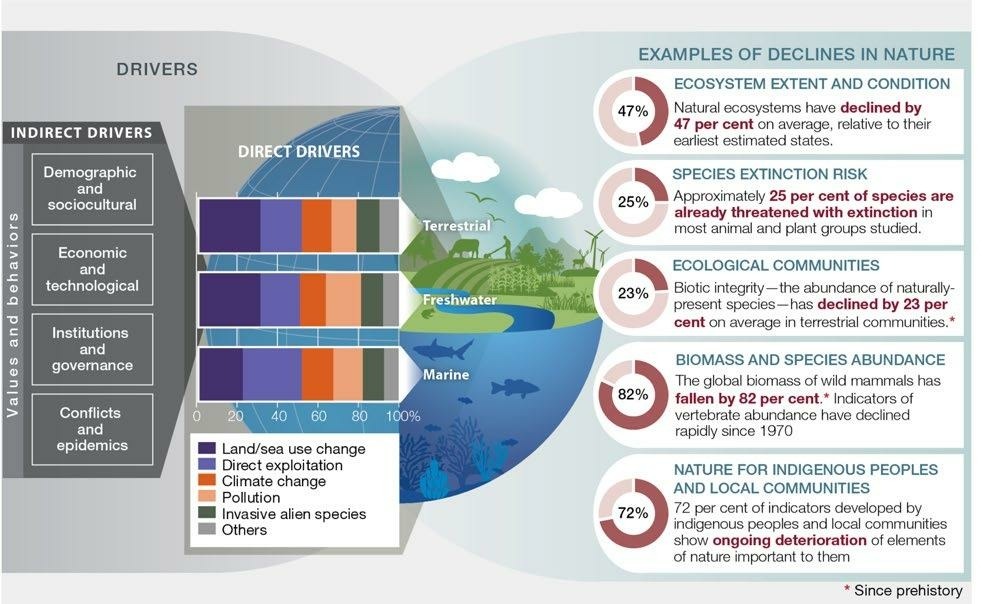IPBES Report shows Land-use change a top threat to biodiversity
Habitats like mangrove forests have been destroyed rapidly, leading to sharp declines in biodiversity and ecosystem services, threatening billions worldwide
Over a quarter of all mangrove cover has been lost since 1980, a majority of which was caused by human development. Dramatic land and sea-use change like this is the leading threat to over a million species worldwide, according to a new global assessment by the Intergovernmental Science-Policy Platform on Biodiversity and Ecosystem Services (IPBES). The other main drivers of extinction are direct exploitation of species, climate change, pollution, and invasive species. Coastal ecosystems are particularly threatened by all of these factors as human populations grow, resource use expands, and climate change ramps up the intensity of storms and sea level rise.
Mangroves are a framework for rich and plentiful biodiversity: thousands of fish and shellfish species, turtles, manatees, migratory birds, tigers, corals, and sponges are just a slice of the biodiversity that mangroves support. They also create the conditions that allow humans and wildlife to thrive by buffering coastlines from waves, purifying water, stabilizing shorelines, and storing massive amounts of carbon in their waterlogged soils. But urban expansion, infrastructure development, aquaculture and agriculture, polluted runoff, and deforestation for firewood, all fueled by increasing human population and resource consumption, are eating away 1% of mangrove cover each year.

Source: IPBES 2019 Global Assessment
Mangroves do not need need to be victims, the report emphasizes; if we take care of them, they can be part of an arsenal of natural solutions for biodiversity loss and climate change while helping realize the Sustainable Development Goals and improving human well-being.
The bottom line: urgent, collective action must be taken from the highest levels of government through local and indigenous communities. The Global Mangrove Alliance is actively leveraging the power of our fifteen national and international members to advance mangrove conservation, policy, and research and the indivisible social issues, like livelihoods and gender equality. The time for transformative action is now, and mangroves are part of the solution.